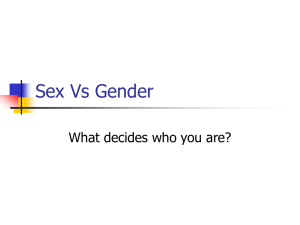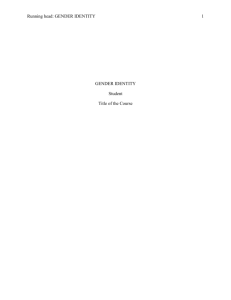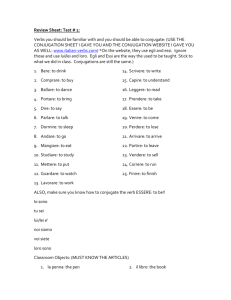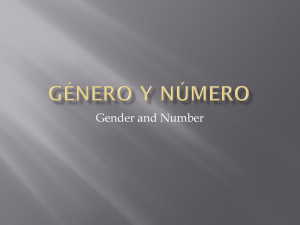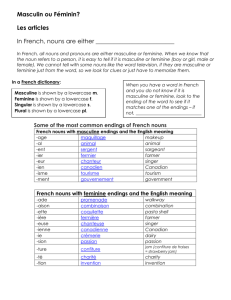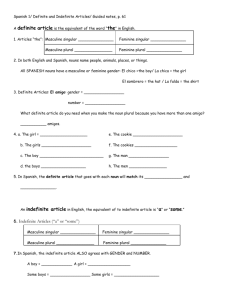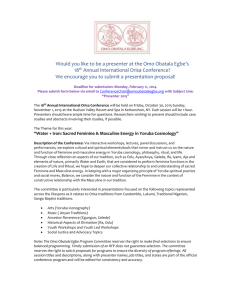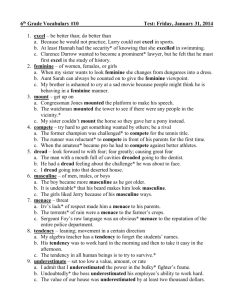Prodigal Son (Luke 15:11-32) There is a famous painting by
advertisement
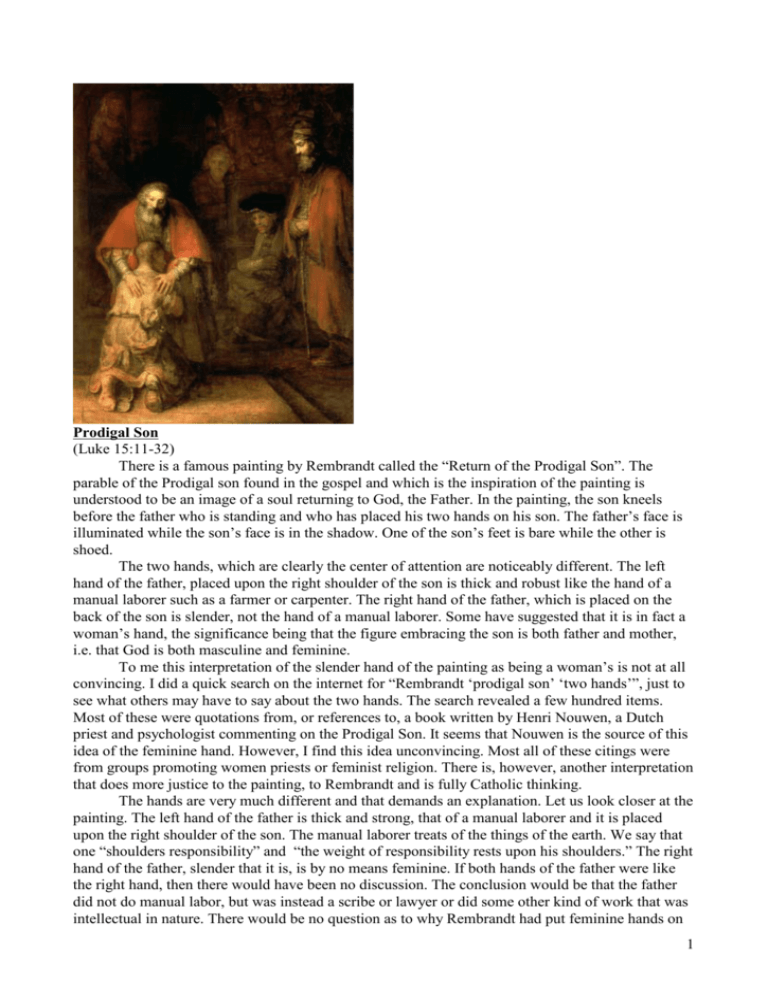
Prodigal Son (Luke 15:11-32) There is a famous painting by Rembrandt called the “Return of the Prodigal Son”. The parable of the Prodigal son found in the gospel and which is the inspiration of the painting is understood to be an image of a soul returning to God, the Father. In the painting, the son kneels before the father who is standing and who has placed his two hands on his son. The father’s face is illuminated while the son’s face is in the shadow. One of the son’s feet is bare while the other is shoed. The two hands, which are clearly the center of attention are noticeably different. The left hand of the father, placed upon the right shoulder of the son is thick and robust like the hand of a manual laborer such as a farmer or carpenter. The right hand of the father, which is placed on the back of the son is slender, not the hand of a manual laborer. Some have suggested that it is in fact a woman’s hand, the significance being that the figure embracing the son is both father and mother, i.e. that God is both masculine and feminine. To me this interpretation of the slender hand of the painting as being a woman’s is not at all convincing. I did a quick search on the internet for “Rembrandt ‘prodigal son’ ‘two hands’”, just to see what others may have to say about the two hands. The search revealed a few hundred items. Most of these were quotations from, or references to, a book written by Henri Nouwen, a Dutch priest and psychologist commenting on the Prodigal Son. It seems that Nouwen is the source of this idea of the feminine hand. However, I find this idea unconvincing. Most all of these citings were from groups promoting women priests or feminist religion. There is, however, another interpretation that does more justice to the painting, to Rembrandt and is fully Catholic thinking. The hands are very much different and that demands an explanation. Let us look closer at the painting. The left hand of the father is thick and strong, that of a manual laborer and it is placed upon the right shoulder of the son. The manual laborer treats of the things of the earth. We say that one “shoulders responsibility” and “the weight of responsibility rests upon his shoulders.” The right hand of the father, slender that it is, is by no means feminine. If both hands of the father were like the right hand, then there would have been no discussion. The conclusion would be that the father did not do manual labor, but was instead a scribe or lawyer or did some other kind of work that was intellectual in nature. There would be no question as to why Rembrandt had put feminine hands on 1 the father. The right hand of the father is not simply placed upon the back, but over the heart of the son. It is with the heart that one turns toward God. It is in the mind that human nature most approaches God’s nature and it is unique to human nature. There is another feature of the painting that seems unnoticed, but is rather significant. The feet of the son are as different as the hands of the father, and they also demand an explanation. The left foot is bare, while the right foot is shoed. The shoed right foot is aligned under the left hand of the father, and the bare left foot is aligned under the right hand of the father. Remember when Moses approaches the burning bush in Exodus. God commands him to take off his shoes. The son takes off only one shoe, not both. From the painting, because of how it is place, it is clear that the shoe has been taken off and has not just fallen off. The right shoe is firmly attached so that one has no impression that it is ready to fall off. There is another detail to add that does not come from the painting but rather from religious imagery which is practically universal. This is the symbolism of the right and the left. The right is associated with reason and the divine, while the left is associated with the instincts and the earth. Jesus refers several times to the right and left. Those on the right are saved and those on the left are condemned. They are condemned, not because the earth is condemned for “God saw all that he had made and saw that it was good”. Rather, those on the left are condemned because they made devilish use of the earth, while those on the right made godly use of the earth. Jesus is said to sit at the right hand of the Father. Jesus is the Light of the world. Jesus is the Word of God, the Logos, i.e. the Reason of God. Notice in the painting that the light descends from the left which is actually the right from the father’s point of view. It is the father who is the reference. By cutting off his relationship with the father, the son has lost his reference. His face is turned toward the left of the father, in the shadow away from the light. Those who do good stand in the light to be seen by all, while those who do evil avoid the light so that their actions can remain hidden. The son, was of those on the part of the condemned because he had lost his reason and made devilish use of the earth, but here he is returning to the father to recover his reason. “Father, I have sinned against God and against you.” The father embraces the total son, the earthly and the spiritual, the body and the soul. With his right hand over the heart, the heavenly Father is embracing the soul of the son who is returning with his heart and mind, and with his left hand on the shoulder, the earthly father is embracing the earthly son who is returning with his body and sense. The shoed and un-shoed feet of the son reinforces this interpretation. Rembrandt has, in a marvelous way, caught in this one figure, and one movement, the ineffable union without confusion and distinction without separation of the two natures, human and divine. To say that the slender hand is that of a woman-mother causes more problems than it solves. The father is unambiguously masculine. If instead the image of the father were ambiguous as far as gender is concerned, e.g. with a face that could be either that of a woman or a man, then interpreting the one hand masculine and the other feminine might make some sense. As it is, it makes a monster of the figure as though the right hand was cut off and that of a woman grafted on. In modern art which seems to have the objective of destroying common sense, this monstrosity could be, but not for Rembrandt or for his age. Besides, even assuming Rembrandt was 350 years ahead of his time, still you would want to find some other indications of gender ambiguity in his other works or writings. You would want some indication that he wanted to mix male and female, an idea not at all Christian. If it existed, surely this modern age that glorifies ambiguity and the ascension of woman into the Godhead would have found it, and it would have been trumpeted for all to know. Some say that God is both male and female, both Father and Mother, and that it would be just as valid to pray “Our Mother who is in heaven” as “Our Father who is in heaven.” After all, God cannot be limited to being only male. But this reasoning is false and nowhere to be found in the Christian tradition. For, more truly, God is neither male nor female. God transcends all human 2 categories and language. To say that God is the source of all fatherhood as well as all motherhood, however is permitted. But, when it comes to saying what God is, God is Father and not mother. Even if God comports himself like a “mother hen”, God is not a mother hen. But, God is Father, and father is masculine. It is necessary to ask what the terms father and mother mean and why they are used. What is meant by these terms and what is being communicated by their use? They are part of a language that was constructed in order to communicate something essential about reality. What reality? About all of reality, human and divine in their relatedness. It is cosmological language, i.e. a language used to communicate an understanding about the fundamental structures of reality. The ultimate human reality is ultimately relational. The terms father, mother, son, daughter, male, female, light, dark, earth ,air, fire, water, are cosmological terms in a cosmological language. The terms are drawn from ordinary experience in order to communicate something about that which is extraordinary. The extraordinary is reflected in the ordinary, and so ordinary language is used to speak about that reflection. Much of this cosmological language is rather universal and not limited to Christianity. The primary relationship is that of God to creation, of God to earth, of God to man. God is masculine, creation is feminine. God is masculine, earth is feminine. God is masculine, soul is feminine. Reason is masculine, instinct is feminine. The infinite penetrates the finite; the finite does not penetrate the infinite. God penetrates creation; creation does not penetrate God. God penetrates the soul; soul does not penetrate God. Male penetrates female; female does not penetrate male. The sexual symbolism could not be more explicit. Gender, masculine and feminine, are not just sexual terms. They are terms of orientation. The masculine is oriented toward the infinite and the ultimate, and the feminine is oriented toward the finite and the proximate. In relation to the world, to creation, the human being is both masculine and feminine. But in relation to God, the human person is only feminine, and God only masculine. Jesus only refers to his Father in heaven, never his mother in heaven. Why is that? Fathers generate sons, mothers generate daughters. This has nothing to do with biology or genetics. God made man male and female. Every individual is male and female. Male and female, masculine and feminine are cosmological categories. The human person, regardless of gender, is a finite being oriented to the infinite. The male-masculine is that aspect of the human being relating to the infinite, and the female-feminine, is that aspect relating to the finite. A spiritually healthy human being is both fully male and fully female. There is no confusion, no ambiguity. Thus, father is the one who generates a relationship with the infinite. It is the relationship with the infinite that the relationship with the finite takes on meaning. For without the relationship with the infinite, the finite life is not worth living, at least not for human nature. The relationship with the infinite is a function of the mind, the reason that is the seat of the soul. While the relationship with the finite is a function of the senses and instincts, i.e. the body. But the entire person (male and female) is in and is from the finite and is oriented toward the infinite, one being, body and soul. The body, (i.e. instinctive nature which is represented by the feminine), with its finite senses cannot turn itself to the infinite. It is turned to the infinite only through the reason. So that, even though the senses are good and have their proper authority, they need to be governed by reason. One could say that the feminine is like the sense of balance, and the masculine the sense of direction. Without balance, one cannot stand on his feet or move, but without a goal to reach, what is the importance of moving? The standing and the moving are in the finite world, the goal to reach is the infinite world. As an example, the stomach indicates hunger. There is a desire to eat, and the tongue knows what it likes and doesn’t like, but it is the reason that must decide what and when and where and how and how much to eat. Likewise with the sex instinct. It becomes stimulated and generates a 3 desire for its satisfaction, but it is the reason that must decide yes or no and when, how, where and with whom. An so on with all the instincts. On what basis does the reason decide? It decides on the most meaningful course of action. All meaning ultimately resides in the infinite. So the reason’s ruling, to be fully human, depends upon its relationship with the infinite. Only if the meaning it derives from its relationship with the infinite is stronger, more valuable, than the meaning derived from the senses can it successfully direct the senses. Otherwise the reason becomes directed by the senses, and this is what is called, and has always been called perversion or inversion. It would be like that tail that wags the dog, or the horse that determines where the rider will go. Such an inverted person lives the life of a slave, dominated by mechanical limited instincts. Even if he feels at the moment free while indulging, because free from the laws and regulations, he is not free to follow a life that is ultimately meaningful. If he reflects on his life, then he knows that his life is ultimately futile. This is true for any and every human being regardless of his gender, politics or religion. The prodigal son is one who had turned off of the path of reason with its ultimate hope in infinite life and became enslaved to the sensual life to pursue the proximate hopes that he can acquire by his own limited capacities. Realizing that the promises of instinctive appetites were void of meaning if not united to the infinite, his reason wakes up and he returns with his whole self, body and soul, instincts and reason, to his earthly father and Heavenly Father, both comprised in a single gesture, in a single figure. The parable of the prodigal son is for every human being – men and women -- who are each both male and female. There is no need whatsoever to introduce into this picture or into the parable a feminine hand or mother. In fact to do so would render the image ambiguous, confused and ultimately incomprehensible. ------- A social commentary -------------Where does this idea come from, this need to introduce the feminine into God? And why has it been so widely diffused even among so many Catholic scholars? I would say that the motive for introducing the feminine into God as mother, derives from the desperate situation that “modern” woman finds herself. She is desperate because deprived of meaning in her own right as a human being. Meaning, for modernity, was strictly masculine, i.e. the man, and a woman’s only route to meaning was through her man. The image of God was taken out of its historical Catholic context and redefined as a projection of rationalist ideology. Rationalism reduced reason to rationalizing through syllogism, i.e., to that aspect which grasps and dominates the world, and excluded that uncontrollable aspect that embraces the totality, the infinite. Thus it is not really a quest for truth, justice, or love but rather power. The mind naturally is dualistic in the sense that, if one knows a thing, one also knows its negation or its contrary. Thus if God is masculine, then God is not feminine, which of itself does not contradict Catholic tradition, if understood in the right sense. But rationalism went a step further and made an absolute identification of the masculine-reason with men and the feminine-feeling with women. In Catholic thinking the difference is only relative, a kind of specialization for the enhancement of human social life as well as a sign, as an icon, of the reality of God’s relation to creation and God’s relation to human nature. In rationalism then, a man was defined as not-what-woman-is, and a woman was defined as not-what-man-is. Purification is an essential part of every religion including the religion of reason absolutized. Thus, the process of purification in rationalist society was the stripping of feminine aspects from men and masculine aspects from women. Socially, this meant the exclusion of women from masculine positions and men from feminine positions. Meaning was restricted to reason of which women were, by definition, devoid. Men found meaning by being themselves and women 4 found meaning by clinging to their man. As is written in Genesis after the Fall: you will cling to your man and he will lord it over you. This is descriptive of the situation after the Fall and not prescriptive, as though it is a new rule. This desperate situation produced by rationalism is rather recent historically, while the Fatherhood of God is very ancient. Therefore, the idea that the Christian concept of God as father is the root of the desperation of modern woman or the crisis of modern society has no foundation. And likewise the positing of God as Mother is no solution. The modern feminist movement which strove to respond to the desperate plight of rationalist women arose out of this rationalist culture and not traditionally Catholic culture. Being a child of rationalism, it produced a rationalist response. It was a rebellion against all things masculine, against fatherhood of God and fatherhood of man. Its solution was to feminize everything from God to fatherhood. It was, however, not a move to restore relationship which is particularly feminine, but rather a move to acquire power, because meaning was identified with power. And this pursuit of power is particularly masculine. It was not the pursuit of power through reason, but the pursuit of power through instinct. Thus was born the post-modern era. At the beginning of the rationalist movement, the masculine world of men stripped itself of the sentiment and absolutized reason associating it with God. Contrariwise, (in the nature of reason by negation), the feminist world of women was stripped of reason and absolutized instinct, sense and sentiment, associating them with God. Thus, we now have two parties, two worlds and two Gods absolutely divided. Each party strives to unite the world under its banner. The one thing that holds the two together is their common hatred not only for traditional Christianity but all traditional Religious belief. Christianity, at least the faithful solid core, refused to either deify or reject reason or to deify or reject instinct. This absolute division of the world of men and the world of women would necessarily lead to absolute conflict. Thus, to preserve peace, some saw it necessary to insist upon the relativity of all things and all knowledge (and the neutering of human nature and language). Because human nature is inexorably oriented toward the absolute, this leads to the absolute relativization of all things such that the world becomes without center, without reference. Everything tends to absolute ambiguity. Social and personal will becomes paralyzed. In desperation, it makes an absolute leap into the void, an absolute and arbitrary exercise of will. The random mass murder-suicides that are becoming ever more frequent and atrocious are, on the personal level, the precursors and prophets of what is to come socially. I do not wish to impugn the good name of Henri Nouwen. I do not really know his thought or works. I know that people whose opinions I respect hold him in good regard and I never heard any accusations against him. I do know that he died in good company with L’Arche community of Jean Vanier. My intention is very limited, concerned only with the interpretation of this one painting by Rembrandt. However, I found that Nouwen’s remarks about this painting were being used in feminist circles in support of their ideology of Motherhood of God and female priests. In my mind it is the distortions about the nature of God and the nature of man, i.e. the nature of reality are at the root of the crisis of “modernity”. And these distortions have their effects in the distortions of fatherhood and motherhood. These relationships, father-son and mother-daughter are the foundations of all other relationship. Thus these distortions enter into all relationships private and public, personal and social, and between man and nature. The West is heading to disaster of its own making and the only solution I see is true fatherhood which is the true restoration of man to God as depicted in the Prodigal son of Rembrandt. Only the Father can save us and the Father is revealed through the son. 5 One does not turn to God with the mind alone in a kind of rarefied, Platonic reason detached from bodily existence. One turns to God with ones whole being, body and soul, sense and reason. This is a turning to God the infinite and absolute. It is a return of the reason, and so it is masculine. Thus the son returning to the father represents the whole person, and the father who generates the relationship with the infinite, finitely and infinitely, relatively and absolutely, is masculine. 6
